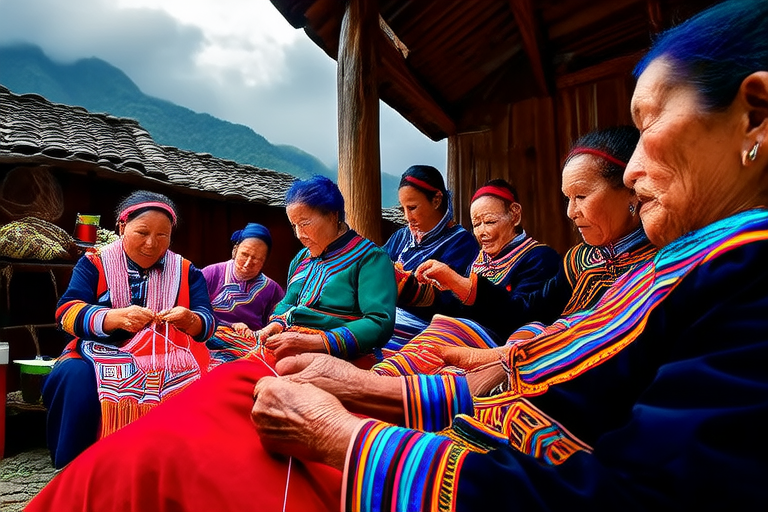Discovering Unique Cultural Customs That Define Communities

“`html
Discovering Unique Cultural Customs That Define Communities
Introduction
Cultural customs are the practices, behaviors, and traditions that are passed down through generations within a community. These customs are significant because they serve as a reflection of a group’s history, values, and identity. They help to preserve a sense of continuity and belonging, ensuring that the community’s heritage remains alive and relevant. Community identity is deeply influenced by these customs, which act as a glue that binds people together.
From the vibrant Diwali celebrations in India to the somber remembrance of Armistice Day in Europe, cultural practices offer a window into the soul of a community. These traditions not only entertain but also educate, providing insights into the cultural nuances that make each society unique. In this article, we will explore how distinct cultural customs shape and reflect the identity of various communities around the world.
Traditional Practices and Festivals
Traditional practices and festivals are vital in preserving cultural heritage. They serve as a means of passing down stories, myths, and historical events from one generation to the next. These events often bring communities together, fostering a sense of unity and shared purpose.
In Asia, the Lunar New Year is celebrated with great enthusiasm. Families gather to exchange gifts, prepare special meals, and participate in dragon and lion dances. This festival not only marks the beginning of a new year but also honors ancestors and wishes for good fortune in the coming months.
In Europe, Carnival in Venice is a spectacular event that showcases elaborate costumes and masks. This festival, which dates back to the Middle Ages, provides a glimpse into the region’s rich history and artistic traditions. It is a celebration of joy and excess before the solemnity of Lent.
In Africa, the Yam Festival in Nigeria is a significant agricultural celebration. It honors the yam, a staple crop, and pays tribute to the gods responsible for its bountiful harvest. This festival is marked by traditional dances, feasts, and offerings, reinforcing the community’s connection to its land and its deities.
These practices and festivals contribute to the social fabric of their respective communities, strengthening bonds and promoting cultural pride.
Daily Customs and Lifestyle
Daily customs and lifestyle choices play a crucial role in defining the identity of a community. From food to clothing, housing, and other aspects of everyday life, these customs reflect the unique values and traditions of each society.
In Japan, the practice of tea ceremonies is an important part of daily life. These ceremonies emphasize harmony, respect, purity, and tranquility, reflecting the country’s philosophical values. Similarly, the traditional kimono is worn during special occasions, showcasing the intricate craftsmanship and aesthetic beauty of Japanese fashion.
In Brazil, samba dancing and Carnaval are integral to the national identity. Samba schools organize parades filled with colorful floats, dancers, and musicians, celebrating the country’s diverse cultural heritage. The music and dance styles are deeply rooted in African influences, highlighting the blending of cultures that characterize Brazilian society.
Over time, these customs have evolved, adapting to modern lifestyles while maintaining their core values. For instance, many traditional dishes have been adapted to suit contemporary tastes, yet they remain true to their origins. This evolution ensures that these customs continue to resonate with younger generations, preserving the cultural identity of the community.
Language and Communication
Language and communication are fundamental in shaping cultural identity. Dialects, idioms, and storytelling traditions contribute to the uniqueness of each community. Language serves as a medium for expressing thoughts, emotions, and cultural narratives.
In Spain, the use of regional dialects such as Catalan and Basque adds to the linguistic diversity of the country. These dialects are not just variations of Spanish; they represent distinct cultural identities with their own histories and traditions. Storytelling plays a significant role in preserving these languages, with tales passed down orally from generation to generation.
In indigenous communities across North America, oral traditions are vital for maintaining cultural continuity. Elders share stories about creation, ancestors, and moral lessons, ensuring that younger generations understand their heritage. These stories are often accompanied by songs and dances, creating a holistic approach to cultural transmission.
Language is a powerful tool for cultural expression, allowing communities to articulate their experiences, beliefs, and values. It fosters a sense of belonging and reinforces the importance of cultural preservation.
Art, Music, and Dance
Art, music, and dance are essential forms of expression that convey historical narratives, spiritual beliefs, and communal values. These artistic expressions play a pivotal role in community cohesion, bringing people together through shared experiences and emotions.
In Indonesia, batik-making is an ancient craft that involves intricate dyeing techniques. Each pattern and color carries symbolic meaning, representing the wearer’s social status, religious beliefs, and cultural background. Batik is not just an art form; it is a way of life that reflects the rich cultural heritage of the Indonesian people.
In South Africa, Zulu dance is an integral part of the culture. Dancers perform energetic routines accompanied by drumming and chanting, celebrating important events such as weddings, initiations, and harvests. These performances showcase the strength and resilience of the Zulu people, reinforcing their cultural identity.
Artistic expressions like these serve as a bridge between past and present, connecting communities to their roots while embracing innovation. They provide a platform for cultural dialogue, encouraging mutual understanding and respect among diverse groups.
Conclusion
In conclusion, unique cultural customs are essential for maintaining community identity and fostering mutual respect among different groups. These customs, whether expressed through traditional practices, daily lifestyle choices, language, or artistic expressions, serve as a testament to the richness and diversity of human experience.
By exploring and appreciating these customs, we can gain a deeper understanding of the complexities that shape our world. We encourage readers to delve further into the rich tapestry of global cultures, learning from and celebrating the differences that make each community truly unique.
“`